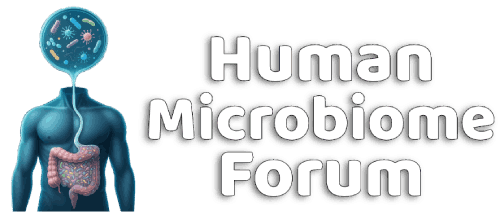Michael Harrop
Well-known member
- These 10 Foods Have the Most Microplastics https://www.yahoo.com/entertainment/10-foods-most-microplastics-230046257.html
- Which foods have the most plastics https://www.cnn.com/2024/04/22/health/plastics-food-wellness-scn/index.html
the minuscule particles can invade individual cells and tissues in major organs, potentially interrupting cellular processes and depositing endocrine-disrupting chemicals such as bisphenols, phthalates, flame retardants, per- and polyfluorinated substances, or PFAS, and heavy metals.
“All of those chemicals are used in the manufacturing of plastic, so if a plastic makes its way into us, it’s carrying those chemicals with it,”
- Himalayan Pink Salt
- Rice (you can reduce the amount of microplastics in rice by 40% just by rinsing it thoroughly before cooking)
- Bottled water
- Breaded Shrimp
- Plant-Based Nuggets
- Apples
- Carrots
- Fish
- Tea (tea bags)
- Sugar
Ways to reduce plastic
· Try to avoid eating anything that has been stored in a plastic container. Look for food stored in glass, enamel or foil.
· Wear clothing made from natural fabrics and buy consumer products made from natural materials.
· Don’t microwave in plastic. Instead, heat food on the stove or by microwaving in glass.
· If you can, eat as much fresh food as possible, and limit purchase of processed and ultraprocessed foods wrapped in plastic.
Studies:
Micro- and nano-plastics in edible fruit and vegetables. The first diet risks assessment for the general population (Aug 2020) https://www.sciencedirect.com/science/article/pii/S0013935120305703
Highlights
- No microplastics (MPs) data for edible vegetables and fruits are available.
- MPs <10 μm ranged by 52,050 to 233,000 particles/g depending on vegetable samples.
- Apples and lettuces were the most and least contaminated samples, respectively.
- Estimate Daily Intakes of adults and children for apples were 4.62 E+05 and 1.41 E+06, respectively.
- Fruits showed the highest Microplastics (MPs) < 10 μm contamination compared to vegetables.
Abstract
Microplastics (MPs) represent a current public health concern since toxicity has not yet fully investigated. They were found in several foods, but to the best of our knowledge, at this time no data was reported for the edible vegetables and fruits. We focused on diet exposure aiming to evaluate the number and the size (<10 μm) of MPs in the most commonly consumed vegetables and fruits, in relation to their recommended daily intake too. MPs extraction and analysis were carried out using an innovative Italian methodology and SEM-EDX, respectively. Finally, we calculated the Estimated Daily Intakes (EDIs) for adults and children for each type of vegetal and fruit.
The higher median (IQR) level of MPs in fruit and vegetable samples was 223,000 (52,600–307,750) and 97,800 (72,175–130,500), respectively. In particular, apples were the most contaminated fruit samples, while carrot was the most contaminated vegetable. Conversely, the lower median (IQR) level was observed in lettuce samples 52,050 (26,375–75,425). Both vegetable and fruit samples MPs levels were characterized by wide variability. The smallest size of MPs was found in the carrot samples (1.51 μm), while the biggest ones were found in the lettuce (2.52 μm). Both vegetable and fruit samples had size of the MPs characterized by low variability. We found the highest median level of MPs in samples purchased from the “fruiter 3” (124,900 p/g) and the lowest in those purchased in “supermarket” (87,600 p/g). The median size of the MPs had overlapping dimensions in all the purchase sites, with the exception of the samples purchased at the “shop at km zero 2″ which had slightly smaller size (1.81 μm).
The highest adults' (4.62 E+05) and children's (1.41 E+06) EDIs are due the ingestion of apples, instead the lowest are due to the ingestion of carrots (adults: 2.96 E+04; children: 1.15 E+05).
We hypothesized that the mechanism of uptake and translocation of MPs can be the same described and reported for carbon-nanomaterials. This may be a possible translocation route of MPs by environment to vegetables permitting, so, the translocation or uptake inside of their biological systems.
Based on the results obtained it is urgent important to perform toxicological and epidemiological studies to investigate for the possible effects of MPs on human health.
Consuming microplastics? Investigation of commercial salts as a source of microplastics (MPs) in diet (Jul 2022) https://link.springer.com/article/10.1007/s11356-022-22101-0
Abstract
The omnipresence of microplastics (MPs) in marine and terrestrial environments as a pollutant of concern is well established and widely discussed in the literature. However, studies on MP contamination in commercial food sources like salts from the terrestrial environment are scarce.
Thus, this is the first study to investigate various varieties of Australian commercial salts (both terrestrial and marine salts) as a source of MPs in the human diet, and the first to detect MPs in black salt. Using Nile red dye, the MPs were detected and counted under light microscopy, further characterised using attenuated total reflectance Fourier transformed infrared spectroscopy (ATR-FTIR) and scanning electron microscopy and energy-dispersive X-ray spectroscopy (SEM–EDS).
Of all the 90 suspected particles, 78.8% were identified as MPs with a size ranging between 23.2 µm and 3.9 mm. The fibres and fragments constituted 75.78% and 24.22% respectively. Among the tested samples, Himalayan pink salt (coarse) from terrestrial sources was found to have the highest MP load, i.e. 174.04 ± 25.05 (SD) particle/kg, followed by black salt at 157.41 ± 23.13 particle/kg. The average concentration of detected MPs in Australian commercial salts is 85.19 ± 63.04 (SD) per kg. Polyamide (33.8%) and polyurethane (30.98%) were the dominant MP types.
Considering the maximum recommended (World Health Organization) salt uptake by adults daily at 5 g, we interpret that an average person living in Australia may be ingesting approximately 155.47 MPs/year from salt uptake. Overall, MP contamination was higher in terrestrial salts (such as black and Himalayan salt) than the marine salt. In conclusion, we highlight those commercial salts used in our daily lives serve as sources of MPs in the diet, with unknown effects on human health.
- Format correct?
- Yes
